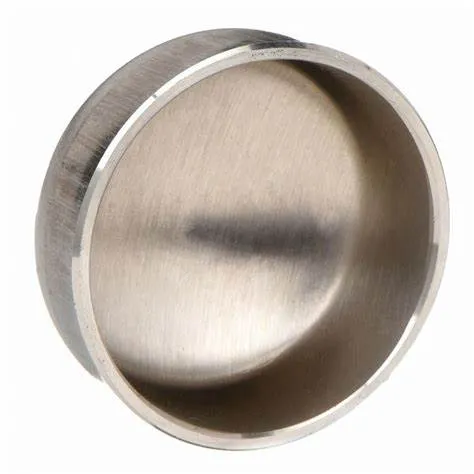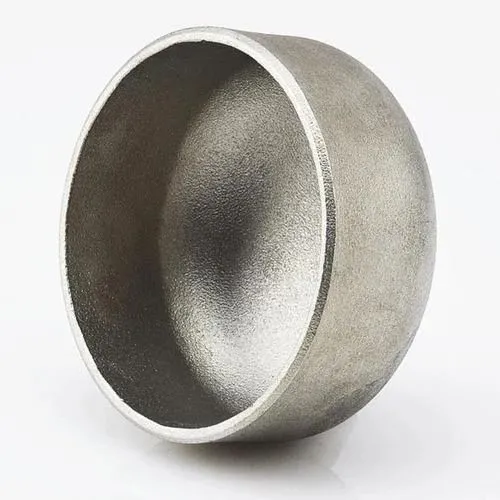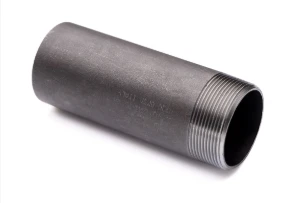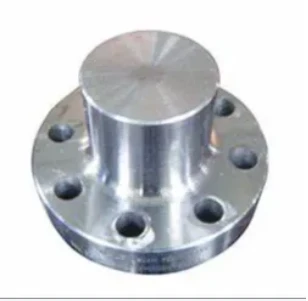JIS B2311 è uno standard industriale giapponese che copre i raccordi per tubi con saldatura di testa, compresi i tappi utilizzati nei sistemi di tubazioni. I cappucci per saldatura di testa hanno lo scopo di chiudere l'estremità di un tubo, fornendo una tenuta per evitare perdite o contaminazione. Ecco un'introduzione ai cappucci per saldatura di testa JIS B2311:
- 1. JIS B2311 Standard:
- - Lo standard JIS B2311 specifica i requisiti per progettazione, dimensioni, materiali, produzione e test dei raccordi a saldare di testa, compresi i cappucci, nei sistemi di tubazioni.
- - Lo standard garantisce che i tappi prodotti in conformità con gli standard JIS soddisfino gli standard di qualità e siano compatibili con altri componenti delle tubazioni.
- 2. Tappo per saldatura di testa:
- - Un tappo per saldatura di testa, secondo JIS B2311, è un raccordo progettato per coprire e sigillare in modo sicuro l'estremità di un tubo, offrendo protezione e mantenendo l'integrità del sistema di tubazioni.
- - I tappi vengono utilizzati in situazioni in cui l'estremità del tubo richiede una chiusura, permanente o temporanea, per evitare perdite, contaminazione o per fornire una finitura al sistema.
- 3. Materiale e costruzione:
- - I cappucci per saldatura di testa secondo le specifiche JIS B2311 sono disponibili in vari materiali come acciaio al carbonio, acciaio inossidabile e acciaio legato per soddisfare diversi requisiti applicativi.
- - Questi tappi sono realizzati utilizzando metodi di costruzione standardizzati per garantire una connessione forte e senza perdite quando saldati all'estremità di un tubo.
- 4. Applicazione e vantaggi:
- - I cappucci per saldatura di testa trovano applicazione in vari settori, tra cui petrolio e gas, processi chimici, impianti di trattamento dell'acqua e altro ancora dove le estremità dei tubi devono essere tappate in modo sicuro.
- - I cappucci forniscono protezione alle estremità dei tubi dagli elementi ambientali, prevengono la contaminazione e aiutano a mantenere la pulizia e l'integrità del sistema di tubazioni.
- 5. Installazione e saldatura:
- - Pratiche di installazione corrette, compreso il corretto allineamento, la preparazione dell'estremità del tubo e le tecniche di saldatura, sono essenziali quando si installano i cappucci con saldatura di testa per garantire una tenuta ermetica e a prova di perdite.
- - La saldatura è un metodo comune per fissare i tappi ai tubi, fornendo una chiusura sicura e permanente in grado di resistere alla pressione, alle variazioni di temperatura e al flusso del fluido all'interno del sistema.
- In sintesi, i cappucci per saldatura di testa JIS B2311 sono componenti cruciali utilizzati nei sistemi di tubazioni per sigillare e proteggere in modo sicuro l'estremità dei tubi. Questi cappucci sono conformi ai requisiti standardizzati per garantire qualità, affidabilità e compatibilità nelle applicazioni industriali in cui sono necessarie la chiusura e la protezione dei tubi.
What Is a Butt Welding Cap and How Is It Used in Industrial Piping?
In industrial piping systems, end-of-line sealing and branch closures require robust solutions. A butt welding cap serves as a critical component for terminating pipes securely. By providing a seamless, welded closure, this fitting maintains system integrity, prevents leaks, and supports compliance with industry standards.
What Is a Butt Welding Cap?
A butt welding cap—also called a pipe end cap or buttweld end cap—is a round fitting designed to close off the end of a pipe. It’s manufactured to match the pipe’s outer diameter and schedule, with either a hemispherical or flat face. To install, both the pipe end and cap are beveled to form a V‑groove, enabling full‑penetration, fusion welds. Common materials include carbon steel, stainless steel, nickel alloys, and other engineered grades, chosen to satisfy pressure, temperature, and corrosion‑resistance requirements.
How Is Butt Welding Cap Used in Industrial Piping?
Butt welding caps find application across oil & gas, petrochemical, power generation, water treatment, and general process industries for both permanent and temporary closures. During hydrostatic testing, technicians install caps to seal off sections of piping while monitoring for leaks. In new construction or retrofit projects, caps terminate branch lines, future tie‑in spools, or dead‑end mains until system expansion. Welders prepare each joint by cleaning and beveling surfaces, aligning the cap precisely, and executing a root pass followed by filler passes per the qualified Welding Procedure Specification (WPS). Post‑weld heat treatment and non‑destructive examination (NDE)—such as radiography or ultrasonic testing—verify weld integrity and compliance with ASME B16.9 and related standards. Additionally, temporary caps enable safe isolation during maintenance, allowing for segment testing and dewatering under regulatory protocols.
Benefits and Best Practices
Butt welding caps offer a smooth‑bore transition that minimizes flow disruption and stress concentration. Their full‑penetration welds deliver exceptional structural strength and leak resistance. To optimize performance, engineers should:
Select caps with matching material grades and wall thicknesses
Adhere to proper bevel angles and joint fit‑up tolerances
Follow qualified WPS protocols rigorously
Consider cladding or protective coatings in corrosive environments to extend service life
Regular inspection and thorough documentation ensure long‑term reliability and safe operation under demanding conditions.
Butt welding caps are indispensable components for achieving durable, leak‑proof pipe terminations in a wide range of industrial applications.
Butt Welding Cap FAQs
What is a butt welding cap?
|
What materials are commonly used?
|
What standards govern butt welding caps?
|
How are butt welding caps installed?
|
Where are butt welding caps typically used?
|
What are the advantages of threaded caps?
|
















